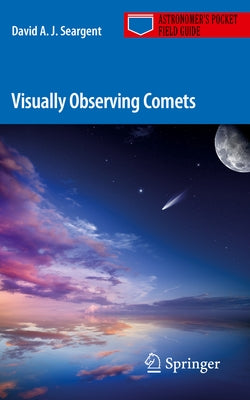Description
In these days of computers and CCD cameras, visual comet observers can still contribute scientifically useful data with the help of this handy reference for use in the field. Comets are one of the principal areas for productive pro-amateur collaboration in astronomy, but finding comets requires a different approach than the observing of more predictable targets. Principally directed toward amateur astronomers who prefer visual observing or who are interested in discovering a new comet or visually monitoring the behavior of known comets, it includes all the advice needed to thrive as a comet observer.
After presenting a brief overview of the nature of comets and how we came to the modern understanding of comets, this book details the various types of observations that can usefully be carried out at the eyepiece of a telescope. Subjects range from how to search for new comets to visually estimating the brightness of comets and the length and orientation of tails, in addition to what to look for in comet heads and tails.
Details are also given of 20 periodic comets, predicted to return between the years 2017 and 2027, that are expected to become suitable targets for visual observing, in addition to information on a famous comet potentially visible each year and subject to great outbursts of brightness.
Author: David A. J. Seargent
Publisher: Springer
Published: 03/23/2017
Pages: 276
Binding Type: Paperback
Weight: 0.85lbs
Size: 8.15h x 5.07w x 0.69d
ISBN13: 9783319454344
ISBN10: 331945434X
BISAC Categories:
- Science | Space Science | Astronomy
- Science | Earth Sciences | Geology
About the Author
David Seargent is a former part-time lecturer in Philosophy with the Department of Community Programs at the University of Newcastle (Australia). He is a regular contributor of a comet column to Australian Sky & Telescope and formerly to Sky & Space magazine. Additionally, he authored the following books in Springer's Astronomers' Universe series: The Greatest Comets in History; Weird Astronomy; Weird Weather; Weird Worlds; Weird Universe; Weird Astronomical Theories of the Solar System and Beyond.

